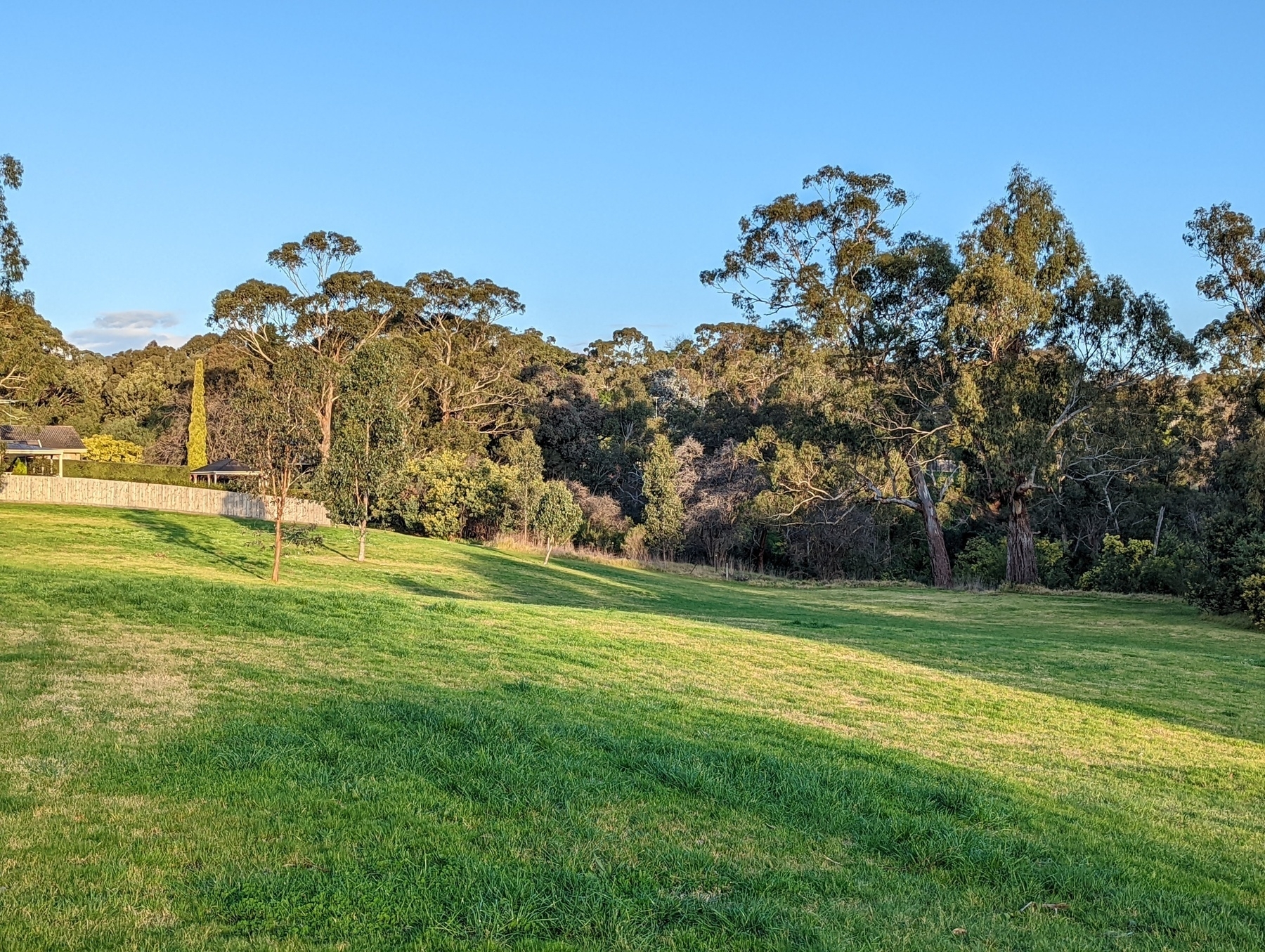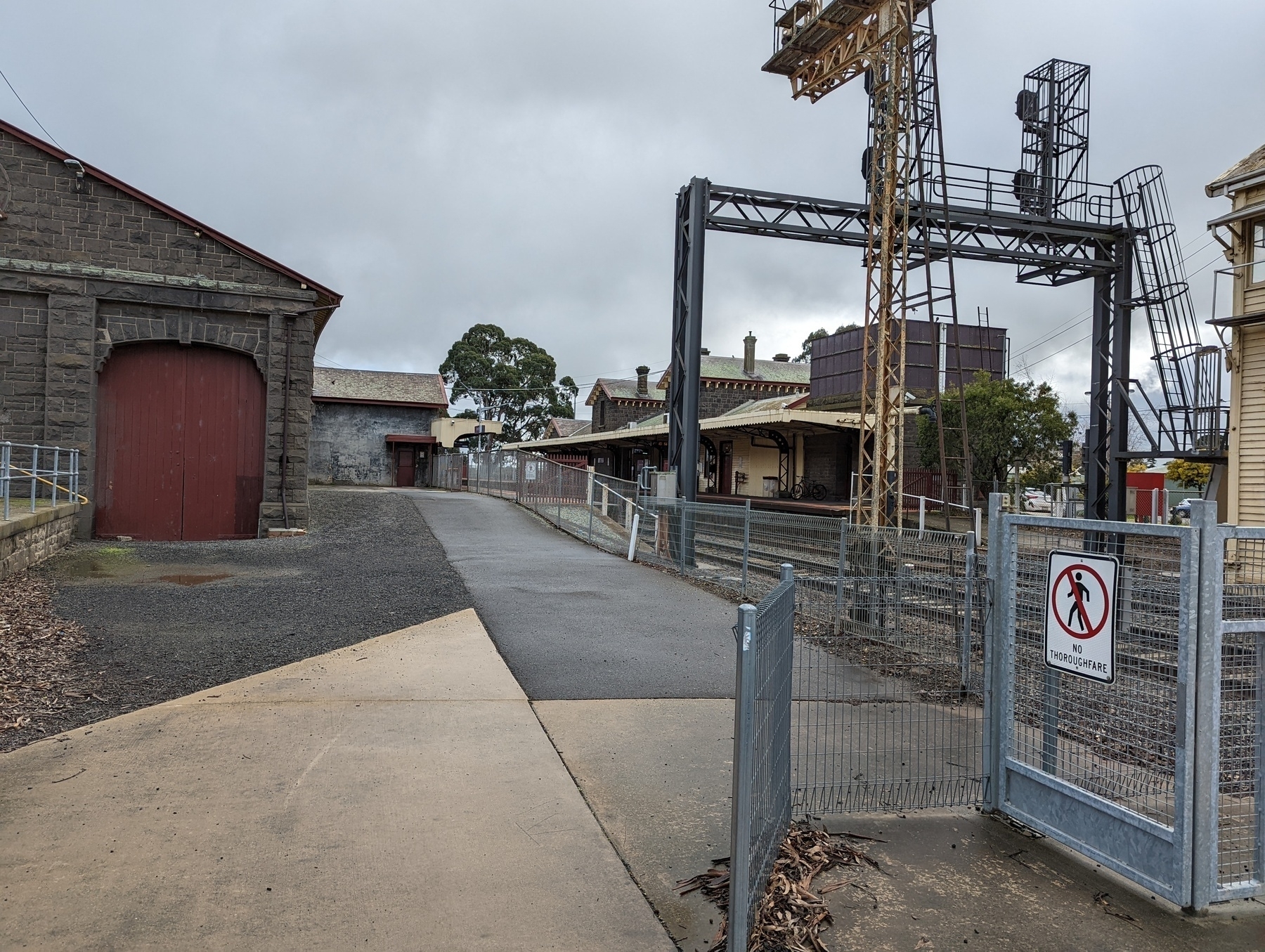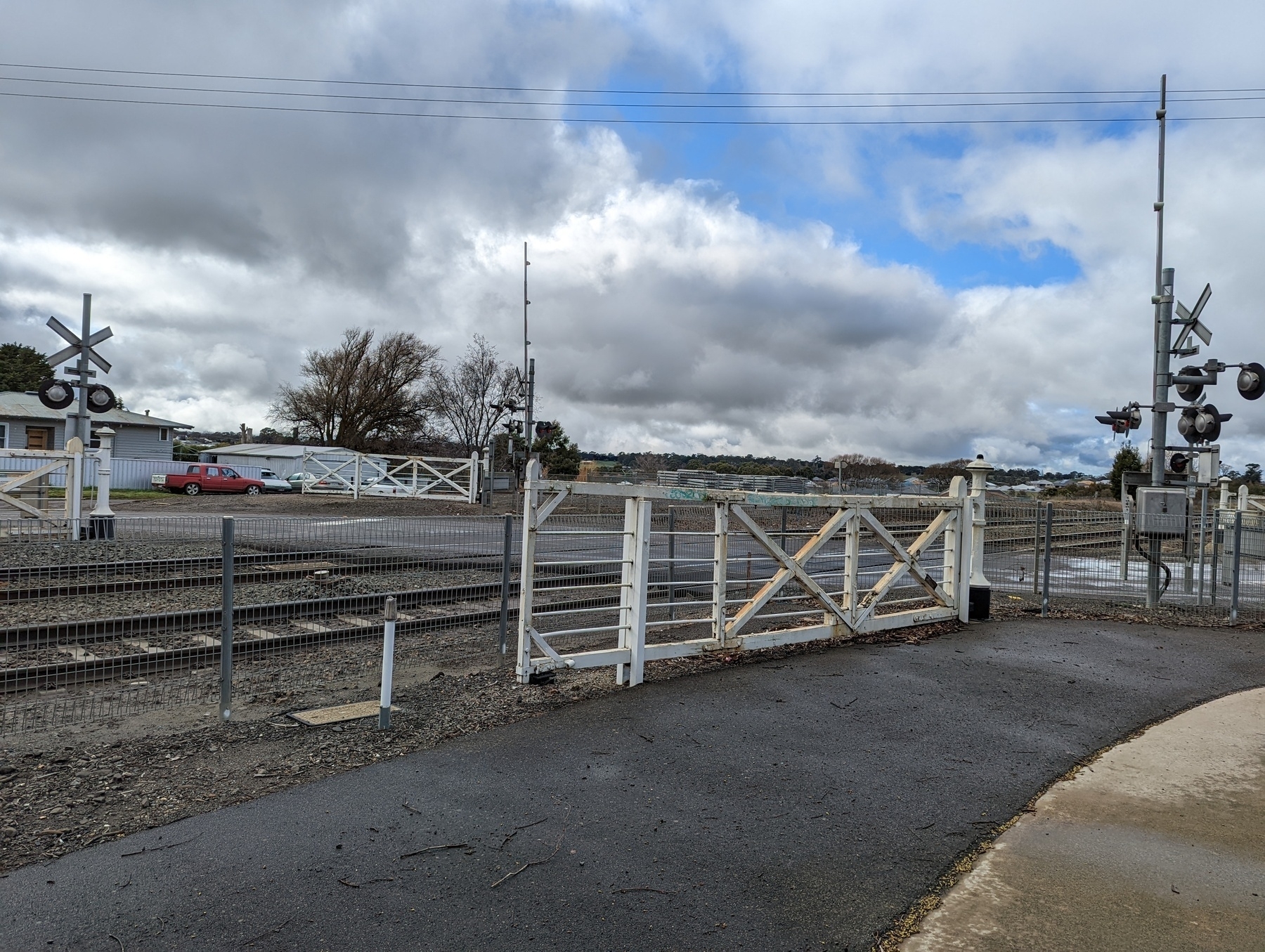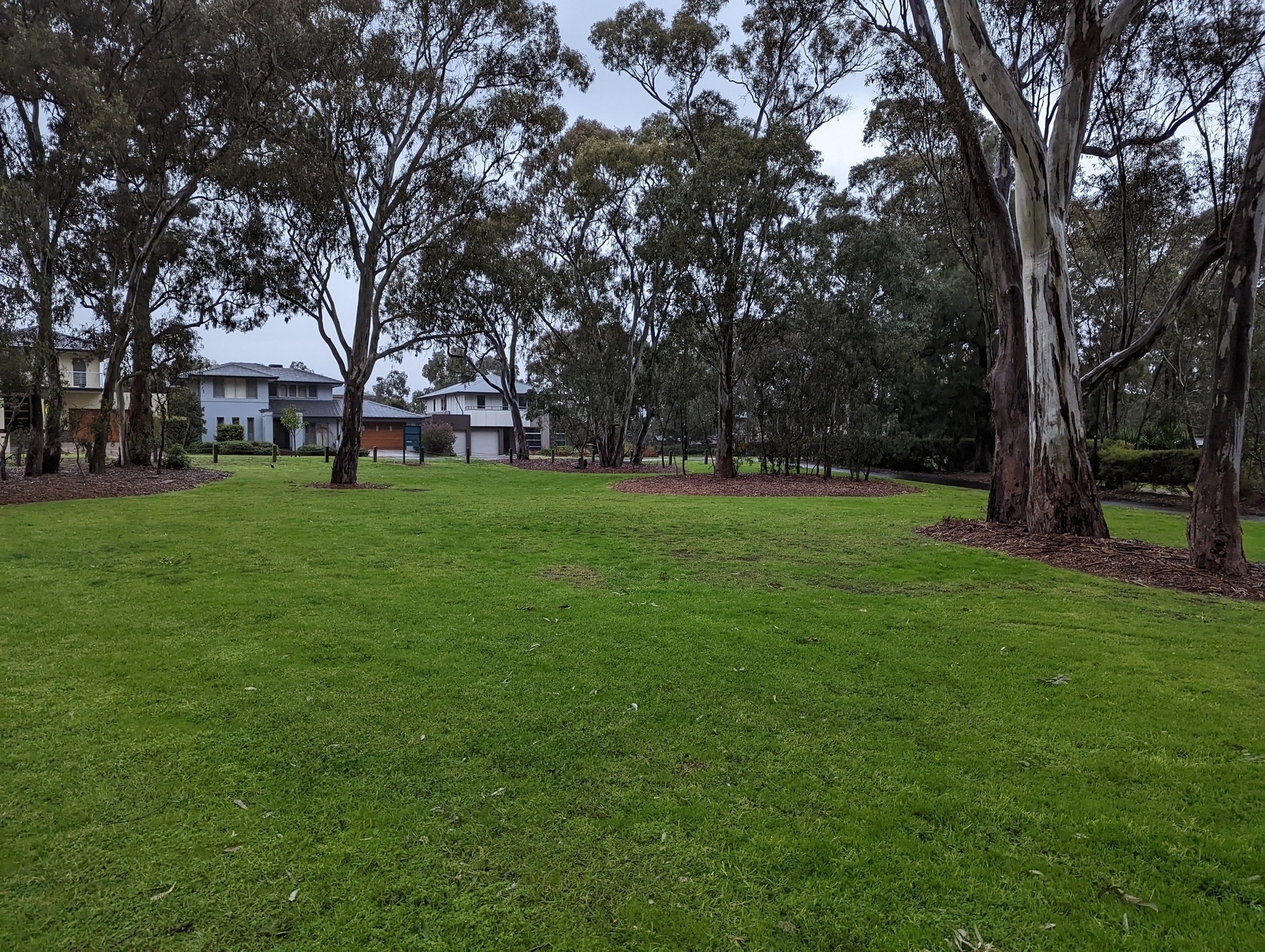-
I started seeing job ads for “Blockchain Engineer” on LinkedIn recently. I have no interest in such roles. But I was curious, so I clicked into one to see what it actually entails. Now, LinkedIn is emailing me similar web3 roles, thinking that I’m interested.
Serves me right. 🤦
-
Dad and I have been watching YouTube cab-rides of the NYC subway system recently. Part of the fun is trying to understand the various track configurations and how the system operates. The size of the network never ceases to amaze.
-
I had the opportunity to meet up with someone I use to work with at the Bureau of Meterology this morning.
I left the Bureau about five years ago, and although I didn’t work with this person on a daily basis, our two teams were reasonably close. One advantage of working in the team that manages the message switching service (MSS) is that you tend to have dealings with many other teams that need to shuffle data around. This person belong to one such team. He dealt with with software related to severe weather, and the alerts produced by them had to be ferried around by out team.
We talked a little about the Bureau. There have been people that have retired or moved on but the team I use to work with is still largely intact. We talked a little about the project that was meant to have replaced the home grown MSS that our team was responsible for. The goal was to replace it with a commercial, off the shelf package sold by a firm that specialises in software for met services. This was meant to have happened roughly a year or two after I left, way back in 2017. But it turns out that this MSS system will not go quietly. Given how tailored it is to the general operations of the Bureau, replacing it proved way too difficult, and it seemed like those that were trying to do so have given up in defeat, at least for the moment. And I get it, nothing lasts for ever, and eventually this MSS system will have to be replaced by something. But even so, it’s good to hear that it’s still around.
And yes, I asked about the admin tool I built. It’s still being used, and indications seem to be that people still like using it.
I was pleased to hear that. Talking about it this morning bought me back to that particular project. I had fond memories working on it. It was fun, and I was proud of what I was able to build. And yet, despite how difficult it was to step away from it, I can’t help think that doing so was the right decision. Staying on that project would not have help me grow professionally. I’ve learnt so much since then, and feel like a much better developer, thanks to moving on and trying different things. Well, it’s good to have the memories.
-
Adding A Back-Stack To Dynamo-Browse
Spent some more time working on dynamo-browse, this time adding a back-stack. This can be used to go back to the previously viewed table, query or filter by pressing the Backspace key, kind of like how a browser back button works. This is the first feature that makes use of a workspace, which is a concept that I’ve been thinking about since the start of the project. A workspace is basically a file storing various bits of state that could be recalled in future launches of the tool. Continue reading →
-
Facinating website for the casual Melbourne train buff. A lot of great photos of rail infrastructure, plus what appears to be routine “photos from 10 years ago” posts, which brings me back. Link via my dad.
-
The electrification of large vehicles is continuing. For the first time, I just saw and not heard an EV bus. Must say that seeing a bus accelerate out of a roundabout without hearing a loud diesel engine was a unique experience.
-
It’s funny seeing marking images of devices intended for “work”. There’s always one shot featuring either a graph or a spreadsheet.
-
Just had an hour long Slack call with someone who was drafting a huge list of tasks in a single Slack message. Thank goodness Slack didn’t fall over, or we would have lost an hour of work. Talk about living on the edge.
-
MacOS’s virtualisation framework looks interesting and I’d like to get my hands on it. Problem is that I have an Intel mac and it only works on Apple silicon. Now I’m wondering if I’m interested enough to actually open my wallet for it.
-
More On Scripting In Dynamo-Browse
Making some more progress on the adding scripting of dynamo-browse. It helps being motivated to be able to write some scripts for myself, just to be able to make my own working life easier. So far the following things can be done within user scripts: Define new commands Display messages to, and get input from, the user Read the attributes of, and set the attributes of, the currently selected row (only string attributes at this stage) Run queries and get result sets, which can optionally be displayed to the user Here’s a modified example of a script I’ve been working on that does most of what is listed above: Continue reading →
-
Currently enjoying the sound of an eastern rosella singing it’s heart out, helping to make a long tiring week just that little bit easier to deal with.
-
It wasn’t that long ago where a Google search would return useful results that were not found by either Ecosia or DuckDuckGo. That’s really not happening as often nowadays. In fact, if Ecosia/DDG cannot find anything, there’s very little reason to bother trying Google at all.
-
Trying to find which countries require 3D Secure for online payments is annoying. Each website only list two or three countries as examples: “3DS is required in some countries like X and Y…”, and do not link to any sources. I need to do like a set union to get the full list.
-
For the past several weeks, these two have been foraging in front of my place. They’re quite skittish, and will fly off when anyone approaches (it’s difficult to get a picture of them). But after a while, they’ll always return to the same spot.

-
Evening walk, with the wattles in full bloom.



-
Kyneton Botanical Gardens
Went to Kyneton with Mum and Dad today. While they went off for a bike ride, I had the opportunity to go for a walk around the botanical gardens. This was my first time there, and although the gardens themselves were not very big, it was still a pleasant experience. Here are some photos I took of that visit. This was followed by lunch at Little Swallow Cafe. The place was quite busy — I suspect that their reputation is such that it would be busy most of the time — but the food was very nice. Continue reading →
-
Kyneton Railway Station.



-
Work was the reason I was unable to go for an afternoon walk last two Fridays. The wet weather was not going to be the reason why I was unable go for one today.

-
This week’s earworm: The Songs Of Distant Earth by Mike Oldfield 🎵
Not necessarily a new one in my rotation, but I’ve been listening to it non-stop all week.
-
In this new work-from-home world we now inhabit, it’s coming to the point where my productivity is directly proportional to how many good podcasts are available today.
-
DynamoDB JSON Attribute Types Quick Reference
Because apparently it’s too difficult for AWS to provide an easy way to find this information. Atomic Types Type JSON Value Binary B String value containing the Base64-encoded binary data. Boolean BOOL Either true or false String S String value Number N String with the numerical value Null NULL Should always be true Collection Types Type JSON Value List L A JSON array, with each element being an attribute with a type. Continue reading →
-
Scripting In Dynamo-Browse
Making some progress with adding scripting capabilities to dynamo-browse. I’ve selected a pretty full-featured JS interpreter called goja. It has full support for ECMAScript 5.1 and some pretty good coverage of ES6 as well. It also has an event loop, which means that features such as setTimeout and promises come out of the box, which is nice. Best of all, it’s written in Go, meaning a single memory space and shared garbage collector. Continue reading →
-
Coming up with a naming convention for things like metadata keys, customer HTTP headers, or log tags; and not writing it down and sharing it with others, is a mistake I’m paying for in spades at the moment.
A little while ago, when we were setting up Stripe and it came time to decide how metadata keys should look, I thought it would be enough to come up with a style in my head (e.g. snake case with a particular prefix) and simply start using it. I guess I was expecting that others would follow it, simply because they would be motivated to maintain the observed style, with the keys I were defining being a bit of an example here.
Well, I now know that not only did this not happen, but when someone does want to know how these names should look (and I include myself here) there’s no definitive guide available to refer to. The result: no convention at all. Different cases, keys without a prefix, etc. Not be a huge problem, but being unable to rely on a convention does mean more cognitive load when it comes time to figuring out how a name is expected to be formed. Plus, it just looks untidy.
I guess it would have been a good idea to document it somewhere. Doing this is not being overly specific or dictating convention from above. It doesn’t have to be as elaborate as an IETF standards: just a few paragraphs and examples that is accessible to everyone. And if others disagree with the proposed convention, then work it through until everyone is happy with it.
I’ll try to remember this for next time.
P.S. More services really need to support user-defined metadata fields like Stripe does.
-
I discovered Goomics by Manu Cornet this morning after reading this Ars Technica article. There are some pretty amusing comics there about “life at Google.” Here’s a few that I particuarily liked:
Credit: Manu Cornet
-
I started writing a comment in GitLab today for a pull request I was working on. I left the comment unfinished to do something else. I was planning to finish it when I returned, but before I could do that, my laptop crashed and I feared that I completely lost it.
Fortunately, when I rebooted, the comment remained as it was in the text-box where I left it.
I don’t know if this was GitLab or Vivaldi or something else. But to whoever program that behaviour: thank you! You saved me 5-10 minutes going back through my thoughts and retyping it (I spent that time writing up this post 😄).


